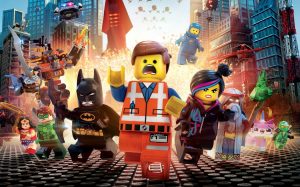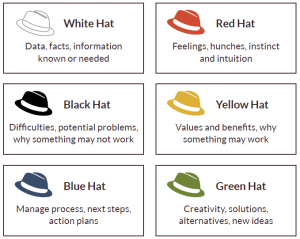If you’re feeling stuck and unoriginal, we’ve got some great tips to boost your creativity. Whether you’re struggling to find an idea you can get excited about, or your story is feeling predictable and needs an original turn, boosting your creativity is the key.
Creativity is the ability to produce original or unusual ideas, or to make something new or imaginative. As Steve Jobs famously said; “Creativity is just connecting things” and I’d add “in new and original ways”.

It is a skill that can be developed just like any other. The more you exercise your creative muscles, the stronger they’ll get.
So here are lots of things you can try to create new connections and boost your creativity.
Relax Your Mind
Letting your mind relax is essential for our mental well-being and can have a huge positive impact on our creativity.
Meditation / daydreaming – the brain is at its most creative when it’s disengaged from external tasks, whether you get there by meditation or just letting your mind wander as you look out of the window.
Distract yourself – many studies find that the act of doing a simple manual task is another great way of encouraging creative ideas to flow. Washing the dishes, gardening, sorting Lego bricks into colour groups, doodling.
Take a shower – it’s no coincidence that many people say their best ideas come to them in the shower; not only does the routine task allow your mind to wander, but the warm water makes your body release dopamine just as it does when you’re exercising.
Move / exercise – whether it’s a brisk walk or a workout at the gym, exercise both distracts you and clears away those mental cobwebs. Or put your favourite track on and dance about.
Sleep on it – scientists have proposed that there is an incubation period during which unconscious processes contribute to creative thinking. Ernest Hemingway said “I learned not to think about anything that I was writing from the time I stopped writing until I started again the next day. That way my subconscious would be working on it.”
Try Something New
The brain seeks patterns between apparently dissimilar things and creativity thrives in the intersection of ideas, so it’s time to give it something new. Combinatory play – the act of opening up one mental channel by dabbling in another – is well recognised as a powerful creative stimulus.
Take a class – sign up to a class in something you’ve never done before. Start learning a new language, try your hand with a pottery class or pick up a musical instrument.
Do it yourself – get creative on your own. Try cooking using new ingredients, pick up a brush and try painting.
Start a sketch book – don’t anlayse or judge the results, just draw for the enjoyment of the process.
Make a collage – have fun cutting images out of magazines, anything that catches your eye.
Create With Your Hands
Small, simple physical acts using your hands can change the way your brain works.
Keep toys on your desk – playing with something, or building something physically with your hands, as opposed to typing on a keyboard, forces your brain to work in a different way.
Write by hand – try using pen and paper (even if you normally collect your notes on your computer) because seeing different ideas physically alongside each other enables you to make connections.
Change Your View
Changing your visual stimulus can help you to get more creative, either by changing where you are or, if you can’t change that, change what you can see.
Find a new environment – find somewhere new to spend time. If you regularly go for a walk, try taking a different route.
Change your perspective – sit in a different place so you get a new perspective. The ‘sit outside a box’ method is great , if you’ve got a cardboard box to hand. For a more accessible version of this try sitting outside a room for example, in a hallway.
Alter an existing space – re-arrange the space you work in, or add new objects to it.
Collaborate
If creativity is the intersection of ideas, then getting different perspectives through collaboration could unlock original ideas.
Meet people – discuss your ideas with people working in a similar field to you. Try meeting other people in your field through in-person and online groups, like the Script Angel Screenwriting Hub group.
Six Thinking Hats Technique – if you’re struggling to find people to collaborate with, try finding those alternative perspectives yourself. The ‘six thinking hats’ technique, pioneered by Edward De Bono is a simple but powerful technique for looking at an idea from different points of view. Simply view or examine an idea or subject from each of these different perspectives.

Thinking and Writing Exercises
There are some great creative writing and thinking exercises out there. Here are some of our favourites.
The 30 circles test – widely attributed to Bob McKim, this exercise is all about pushing yourself to not self-edit. Take a piece of paper and draw 30 circles. In one minute adapt as many circles as you can into recognisible objects. For example, one as a sun, another a globe. You’re going for quantity over quality here!
‘Bad’ ideas – list some ideas you think are terrible and then ask, what’s the best feature of this idea?
‘Wrong’ answers – find a list of (fairly easy) general knowledge questions. Challenge yourself to give an incorrect answer to each question.
Free (or word) association – free association is a method of developing new ideas through a chain or a cycle of word association. You can find out more about the free association method here.
You can use it to spark new ideas relating to a specific problem, idea or premise. Or you can use it more openly by starting with a random word. We like this online random word generator and for something more physical, with a mix of words and images, we love this Writers Block.
Improvisation games – these are great for shutting down your inner critic so you stop filtering ideas so assiduously. The ‘one word at a time story’ is a simple group game where you are given a story title, like ‘Best Birthday Ever’ and take it in turns to add the next word in the story. Great in person, just as fun online! For more improv ideas check out Theatre Folk’s improv games list.
Free writing – this is a great way to get the ideas flowing and as wordsmiths it’s perfect for us writers. You can pick a topic to free write on or just leave it open. The important thing is to set a realistic time limit (at least five minutes) don’t stop, don’t edit, just keep writing whatever comes into your mind.
Mind mapping / brain-storming –like free writing but a bit more visual. Write your key word/subject in the centre of a large blank piece of paper and then draw shoots off for each new thought or idea that is sparked by it. Follow each of those as they in turn lead to new ideas. You might be surprised where you end up!
Be a magpie – the more ideas you have, the more stimuli you can draw upon, the better your chances of making interesting connections. Read widely and collect anything that strikes you as interesting; whole articles, a sentence or two, a slogan, a picture.
Capture every idea – yes, all of them! However fleeting it seems, get it down on paper or whatever note-taking system you use. You might not know what to do with it now but it could be the key that unlocks a new idea later.
Look Again
The passage of time and your experiences since can give you a new insight into old ideas.
Review old notes – if you went to the trouble of capturing it then it resonated with you in some way. Maybe with the passage of time, new experiences and new ideas since then, those old ideas will spark something new or speak to you more clearly.
Take story ideas for a walk – those ‘what ifs’ are what it’s all about, so make sure you don’t dismiss ideas too quickly but go with them and see where they lead. Nicholas Kazan (screenwriter, Matilda) talks about how he goes on this journey: “Often an idea starts with a feeling, or I see a character in the street and he does something interesting and I start wondering why, and I just follow that wherever it goes. Frequently it goes nowhere but what happens is that by writing it down, an idea leads to other ideas and sometimes ideas fall together and make a whole. I play for as long as I can. It’s sort of an exploration of the world of the screenplay.” (from The 101 Habits of Highly Successful Screenwriters)
You might also like these related articles:
Have fun!



